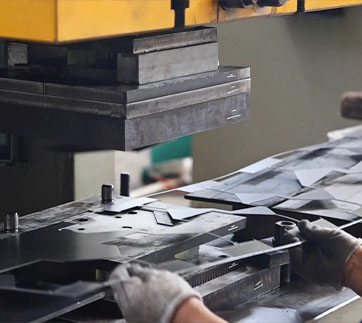
Hey there, manufacturing enthusiasts! Today, we’re diving deep into the captivating realm of sheet metal fabrication. This versatile process has been the backbone of countless industries, shaping the world around us in more ways than we might realize.
Basics
Sheet metal fabrication is the art and science of transforming flat sheets of metal into useful components and products. It involves a series of processes such as cutting, bending, and assembling to create parts with specific shapes and functions. Materials commonly used in sheet metal fabrication include aluminium, stainless steel, mild steel, copper, and brass .
Versatility
One of the most remarkable aspects of sheet metal fabrication is its versatility. The range of products that can be created is vast. For instance, in the kitchen, those sleek and modern splash backs are often the result of sheet metal fabrication. In the electrical industry, control panels and electrical enclosures are fabricated from sheet metal to provide a safe and functional housing for electrical components.
Architecturally, sheet metal is used to create fascias, giving buildings an aesthetically pleasing finish. Gates, railings, and grills not only add security but also enhance the visual appeal of properties, all thanks to sheet metal fabrication. Even in the realm of furniture, frameworks, tables, stands, and canopies can be crafted with precision using sheet metal.
The Process and Key Capabilities
The sheet metal fabrication process often starts with cutting. Advanced CNC (Computer Numerical Control) machining is frequently employed, enabling precise cuts with high repeatability. This technology can handle various shapes and sizes, from simple rectangles to complex, custom designs. Milling, drilling, and grinding are also important capabilities. These processes help in creating holes, adding specific textures, or refining the edges of the fabricated parts .
The Impact on Different Industries
The impact of sheet metal fabrication spans across numerous industries. In the automotive sector, sheet metal parts are used to create car bodies, engine components, and interior fixtures. In the aerospace industry, lightweight yet strong sheet metal components are crucial for aircraft construction. The medical industry also benefits from sheet metal fabrication, using it to create equipment casings and surgical tools. And let’s not forget the consumer goods industry, where sheet metal is used to make everything from electronic enclosures to household appliances.
In conclusion, sheet metal fabrication is a dynamic and essential part of modern manufacturing. Its ability to create diverse, high-quality, and customized products makes it an invaluable process in countless industries. As technology continues to advance, we can expect even more innovation and precision in the world of sheet metal fabrication.
